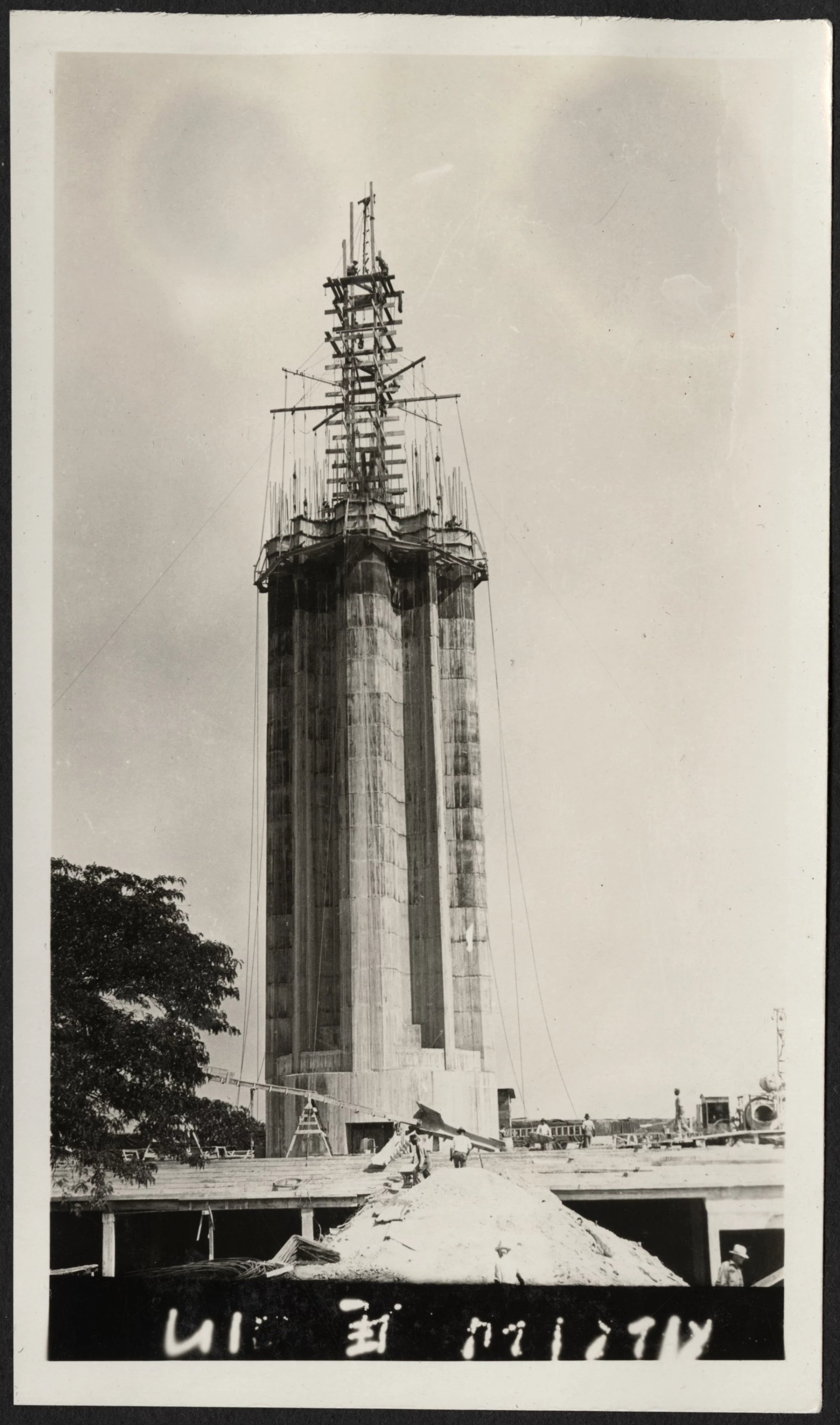The Story of The National WWI Museum & Liberty Memorial
In 1918, with World War I in full force, Kansas City was deeply affected despite only losing 441 residents. When the city celebrated the opening of Union Station in 1914, it wasn’t yet clear that the station would soon serve as a key passage for soldiers en route to training or deployment. As men enlisted, women stepped into the workforce, and crops from the Midwest helped feed troops. The city’s garment district produced essential supplies for soldiers, and residents purchased Liberty bonds to support the war effort.
Post WWI Military Parade. Uniformed troops marching northward along Grand through a victory arch between 10th and 11th. Courtesy: MVSC.
On November 11, 1918, as the armistice was signed, Kansas City faced an influenza epidemic. Despite this, nearly 100,000 people filled the streets downtown for a victory parade, their gathering marking a fresh chapter in the city’s history.
The Birth of a Monument
Construction began on July 5, 1923. Courtesy: The National World War I Museum and Memorial.
The Liberty Memorial Project broke ground on July 5, 1923, led by local civic figures including real estate developer J.C. Nichols, the Armour family from the livestock industry, the Kemper banking family, and lumber baron R.A. Long. The project aimed to honor Kansas City soldiers and serve as a national monument for World War I. A 10-day fundraising campaign in 1919 saw 83,000 Kansas Citians raise $2.5 million (about $35 million today), with community members from all walks of life contributing.
In addition to its grassroots funding, the monument's design was chosen through a national architecture competition, and in 1921, land was dedicated across from Union Station, symbolizing the city’s role in the war effort.
A Legacy of Remembrance
Crowd listening to speakers at the base of the memorial. Courtesy: MVSC.
The grand opening took place in 1926, with President Calvin Coolidge addressing a crowd of 100,000 and designating the site as the national memorial to the Great War. The Liberty Memorial Tower, 217 feet tall and adorned with four "guardian spirit" sculptures and two Assyrian sphinxes representing memory and the future, became a powerful symbol.
The economic challenges of the Great Depression and the onset of World War II delayed similar projects in other cities. In Kansas City, however, the community remained dedicated. In the 1990s, the museum underwent extensive renovations funded by a new sales tax and donations. Designated as the National World War I Museum in 2004 and as America’s World War I Memorial in 2014, it remains an educational and commemorative landmark.
1961: Liberty Memorial Rededication with President Harry S. Truman (left). Courtesy: MVSC.
Today, the National World War I Museum and Memorial welcomes over 600,000 visitors annually, offering education on the war’s global impact and the pursuit of peace. Artifacts such as a Renault FT tank, period uniforms, a 1917 Harley-Davidson motorcycle, a Ford Model T ambulance, and a replica trench provide an immersive, tactile experience. Interactive displays, audio recordings, and a comprehensive research center add depth for visitors.
Standing as both a local and national symbol, the Liberty Memorial reflects Kansas City’s commitment to preserving history and honoring sacrifices made in World War I.
1961: Liberty Memorial Rededication. Courtesy: MVSC.





